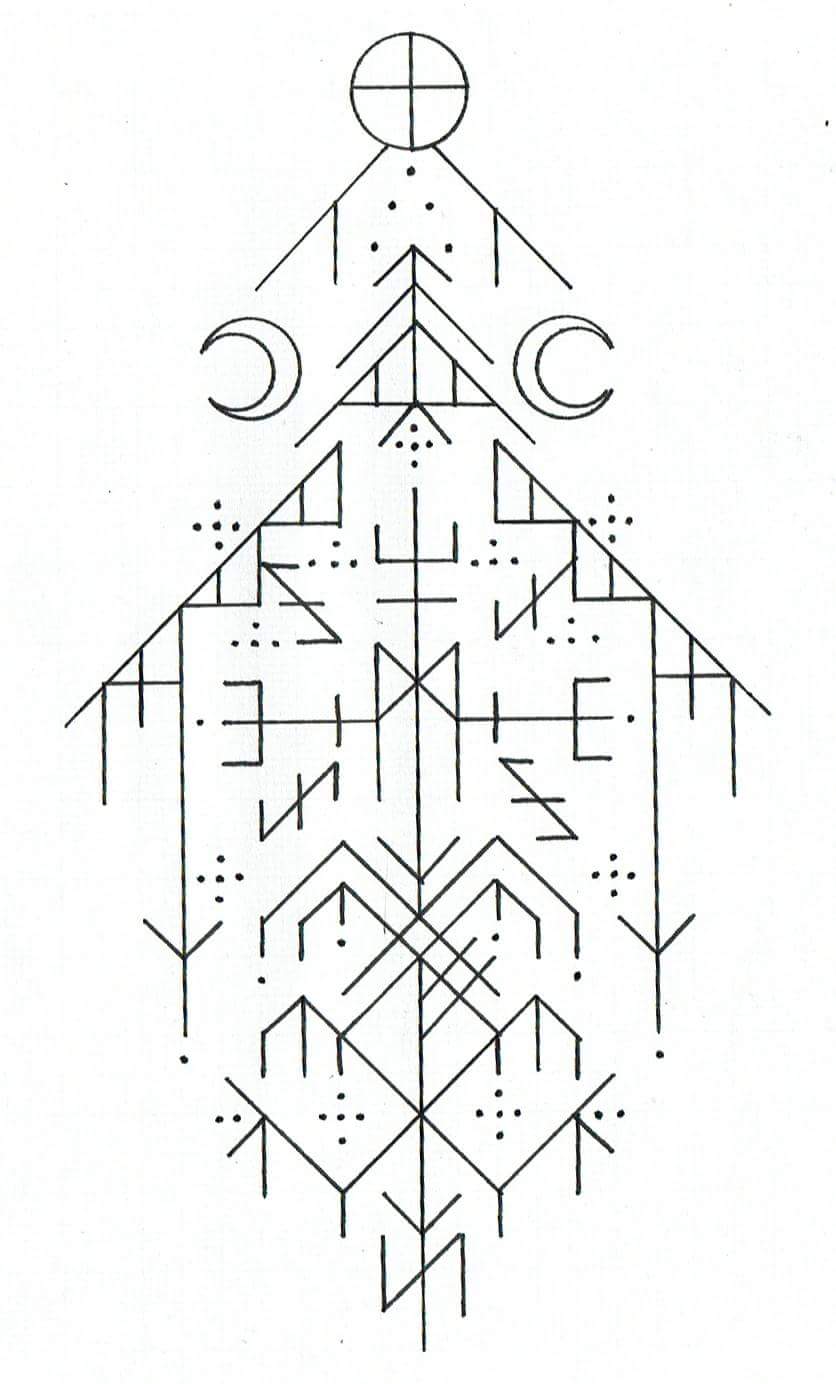
A friend of ours recently asked me to prepare a piece of writing on runic pairings to accompany my Vital Elements video course, and specifically, an explanation on my placement of the Dagaz rune in the final position of the third aett, rather than Othala, as some are wont to do.
My short answer is simple: it makes the most poetic and esoteric sense to do so.
My longer answer:
Regardless of any historical qualification or reference (there is precedent for both placements), I am not a historian, nor do I believe the runes themselves can be “known” by a theoretical or intellectual approach alone. They require both an understanding of the culture and mythos surrounding their creation, as well as an intuitive approach well-informed by the blood; this must be combined with a great deal of time spent with the staves themselves, and their connected lore.
In the first grouping of the eight runes of the Elder Futhark, called the first aett, we see Wunjo raising its bright banner from the crossroads of conflict and sacrifice – the :G:ift of enlightened emergence from the trials and tasks of warriorship or drengskap that have come before it in the aett.
This is the tribal banner, the rune of joyful overcoming, the sign of the hands raised to the forehead in gratitude. A journey’s end, and the beginning of another, more strange and awful and wondrous in comparison.
In the second aett, complex runes of cosmos and reality spiral out in a dizzying array of interstellar patterns and signs – constellations and causality, the bright light of the solar system and the darkness that rests between the stars. Sowilo rises eternal, above the outstretched arms of supplicants, the raised antlers of the deer who feed upon the leaves of Laeradh, and the straining, trembling branches of the great Tree itself.
It is at the center of our world, a rune of triumph, of cyclical brightness and fire, marking the beginning of a new day, and the ending of the one before it. Purpose and meaning, the hot burning core of our own personal solar system, the victory over stasis of hard-won knowledge and territory crowning us with its shining rays.
Dagaz is a rune in keeping with joy, endings and beginnings, the sun, eternity, and timelessness.
It is a master link in the chain of the Futhark. That piece which links start and finish, alpha and omega, together in one magnificent circle, its function plain to see in its shape: Forever.
Othala is representative of one of the effects, and attainment of mastery – a sort of culmination of all the runes that have come before/after it. It is empire and homeland, blood and legacy; but its stave is not final, it neither begins nor ends a story – this is reserved for Dagaz; dusk and dawn, that which lies between and before and beyond, a light from the shadows.
It is time itself, and the promise that what has been shall be again, and that perhaps, if we follow the pathway set out for us by the runes themselves…
The crownless again may be king.
